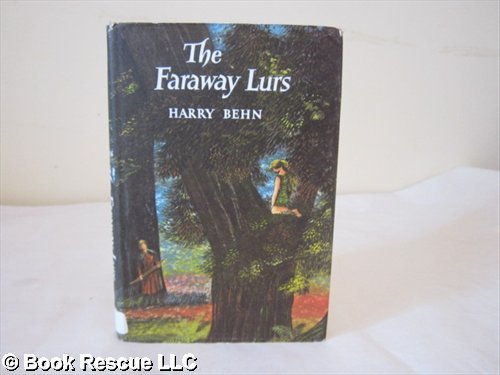 Book #3 for the 48-hour Book Challenge
Book #3 for the 48-hour Book Challenge
190 pages, 2 hours
First of all, what are lurs? A lur is “a Bronze-Age musical instrument in the form of a conical tube that is roughly S-shaped, without finger holes. It is end blown, like a trumpet, and sounds something like a trombone. Lurs often come in pairs, so they are often referred to in the plural.”
The Faraway Lurs, published in 1963, honored by ALA as a “notable book”, is a book I read back in the day when I was a teen. I didn’t remember much about it, but I did think it was notable in my reading past as a story with a different setting and feel from most historical fiction set in the distant past. Most fiction based on ancient history is either set in Egypt, Palestine, Greece or the Roman Empire. This one has an early Bronze Age setting in Denmark, about 3000 years ago.
The romantic protagonists are Heather Goodshade of the Forest People tribe and Wolf Stone, a young chieftain’s son from the tribe of the invading Sun People. A Romeo and Juliet story ensues, as Heather and Wolf Stone fall in love and try to bring their two very different tribal cultures together in peace so that they can be together as man and wife. Wolf Stone’s people are savage savages, worshippers of the Sun God and very warlike and violent both within the tribe and toward outsiders. Heather’s people are more gentle savages, but still the ending of the book demonstrates that even Heather’s gentle forest tribe is in cruel bondage to the whims of their “gentle” gods, an ancient Tree and a whispering Spring.
Of course, Romeo and Juliet is a tragedy, and The Faraway Lurs, drawn from the discovery of a burial mound for a young beautiful Stone Age/early Bronze Age girl, ends in tragedy, too, as any reader who read the introduction, where Mr. Behn tells about the discovery that inspired his novel, would know. The girl in the burial mound died young, and so does Heather Goodshade. How that tragic ending comes about is the hook upon which the novel hangs, so I won’t tell you any more.
This book would be good for teens who are studying ancient history, lending to that study a different perspective and a different cultural understanding. The ancient world wasn’t all pharaohs and Roman legions. And it would be to pair the novel with a viewing of Romeo and Juliet and then a comparison of the two stories. There’s nothing sexually explicit in the novel, and the violence is mostly off-stage or described in unobjectionable but straightforward language. The presentation of the tribal cultures themselves would lend itself to a discussion of the need for all humanity in all its tribes and cultures to be redeemed, saved from our propensity toward sin, brutality, and idolatry. Particularly, as I compare Behn’s story with Shakespeare’s Romeo and Juliet and with the recent event of the church shooting in Charleston, South Carolina, I am reminded of how human sin and prejudice is only covered over by civilization with a very thin veneer. Our idols continue to betray us; our desire for both power and safety continues to lead us into sin and tragedy; and our separation from God continues to play out in divisions between the people He created as we do violence to ourselves and to others in futile attempts to heal the breach or destroy the other.
May God have mercy upon us all.
Fortunately, God does have mercy on us, mercies “new every morning” if we only take time to realize this. Keep spreading the good word.